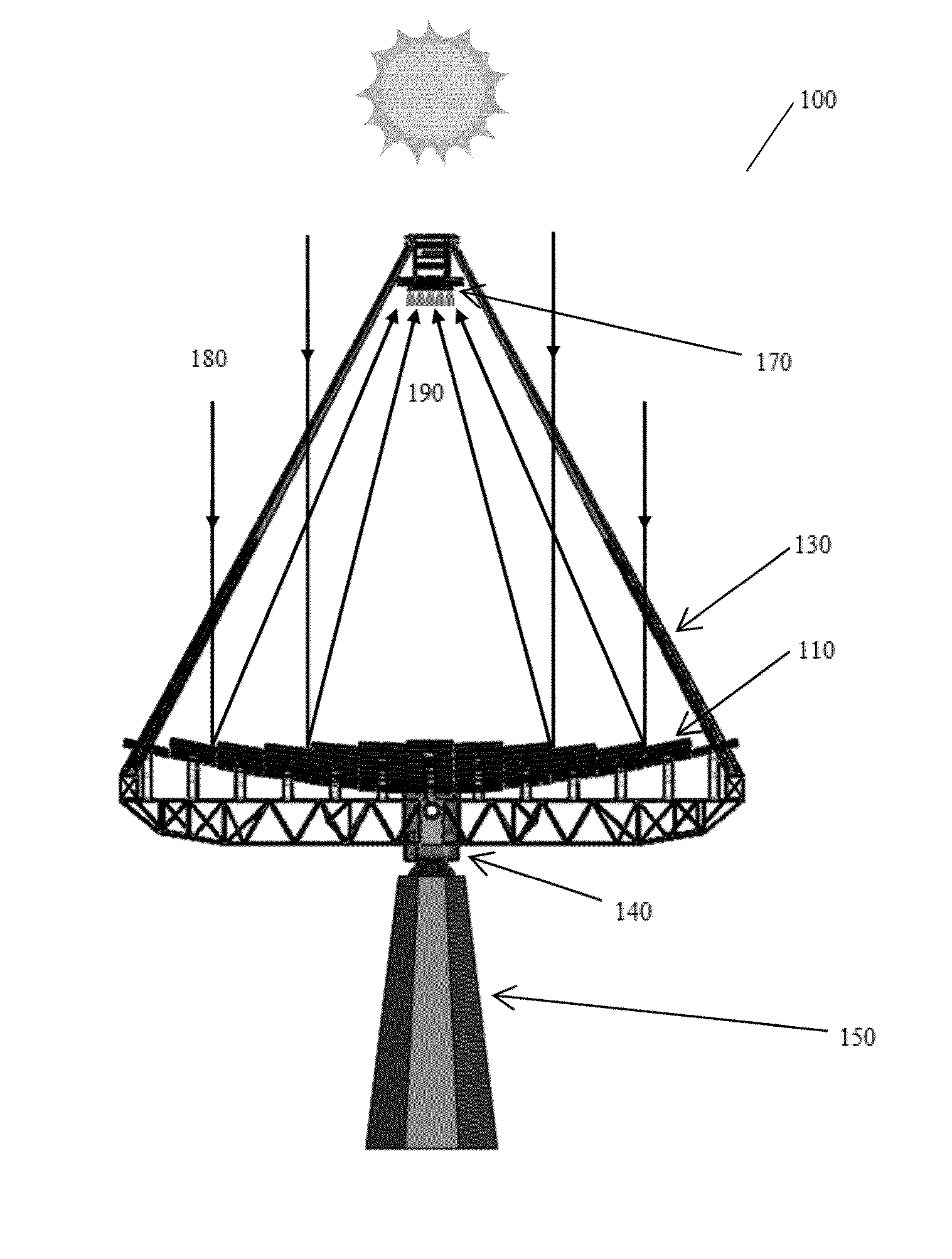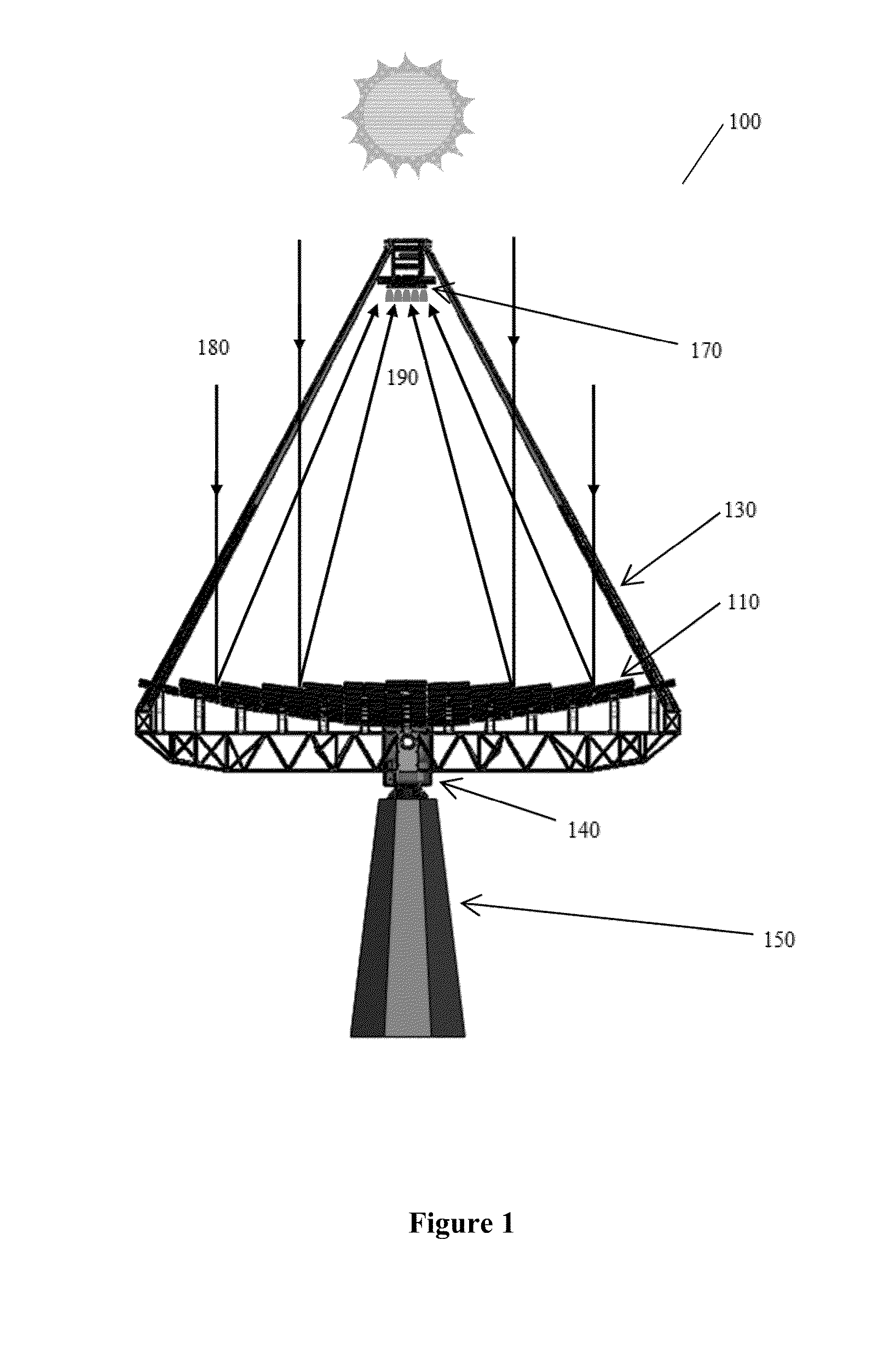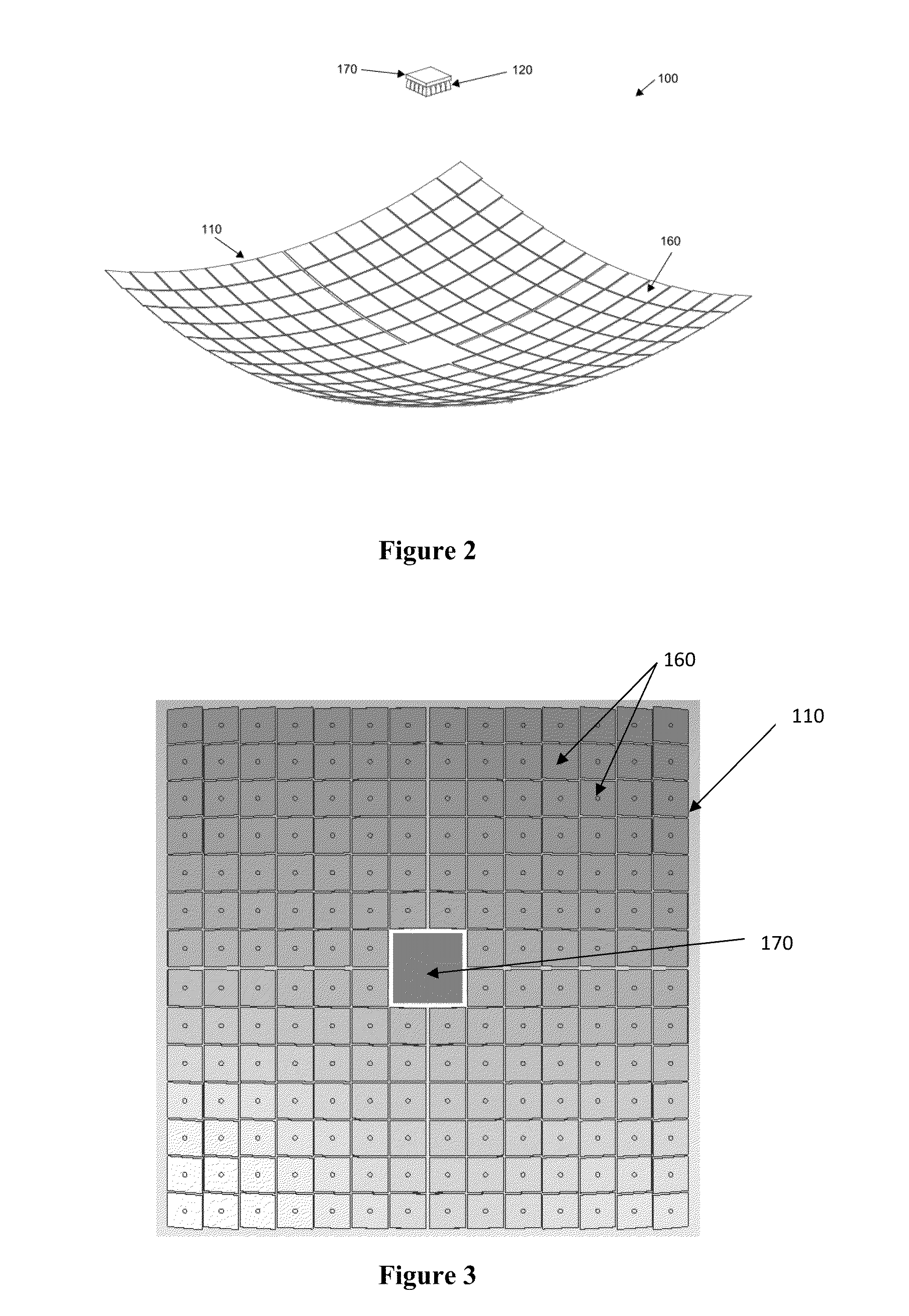Dense-Array Concentrator Photovoltaic System Utilising Non-Imaging Dish Concentrator And Array Of Crossed Compound Parabolic Concentrators
- Summary
- Abstract
- Description
- Claims
- Application Information
AI Technical Summary
Benefits of technology
Problems solved by technology
Method used
Image
Examples
Embodiment Construction
[0027]The present invention will now be described in detail with reference to the accompanying drawings. However, the description or the illustrations as disclosed herein should not be construed as the limitation of said invention.
[0028]The present invention relates to the field of solar electrical power generation system. More particularly, the present invention relates to a NIDC integrated with an array of crossed compound parabolic concentrators in the application of concentrator photovoltaic (CPV) system. The present invention is an improved and efficient solar concentrator assembly (100) of a solar electrical power generation system. The solar concentrator assembly (100) comprises at least one array of facet mirrors (160) arranged to form at least one primary concentrator (110), at least one concentrator photovoltaic receiver (170) and at least one array of secondary concentrators (120) for directing solar energy to the at least one concentrator photovoltaic receiver (170). A n...
PUM
 Login to View More
Login to View More Abstract
Description
Claims
Application Information
 Login to View More
Login to View More - R&D
- Intellectual Property
- Life Sciences
- Materials
- Tech Scout
- Unparalleled Data Quality
- Higher Quality Content
- 60% Fewer Hallucinations
Browse by: Latest US Patents, China's latest patents, Technical Efficacy Thesaurus, Application Domain, Technology Topic, Popular Technical Reports.
© 2025 PatSnap. All rights reserved.Legal|Privacy policy|Modern Slavery Act Transparency Statement|Sitemap|About US| Contact US: help@patsnap.com



